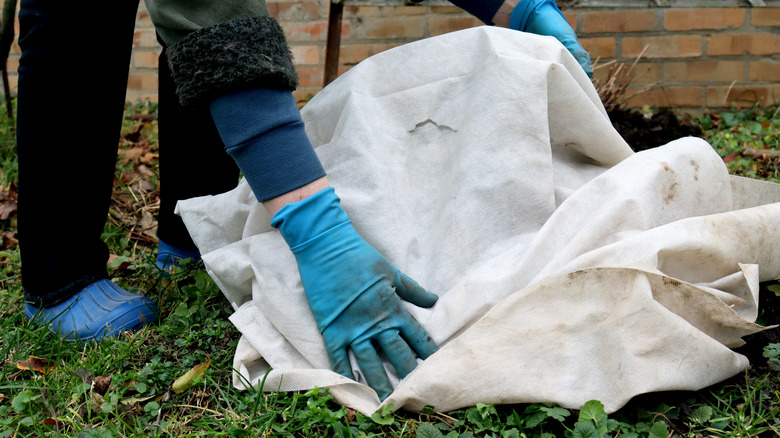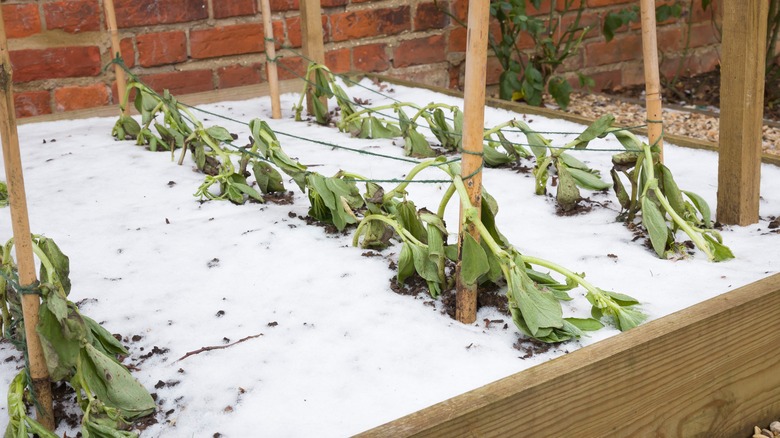If you have only recently started to expand your garden to grow your own plants, you may not know that some just aren’t cut out for colder weather. Without adequate protection, these plants will wither or even die if continuously exposed to freeze-level temperatures. Don’t panic, though. You’ll likely be able to stop this from happening. You can protect your plants from frost in various ways, like covering them and through measures like cold frames.
Firstly, you’ll need to know which levels actually count as freezing for plants. There are three levels of freeze: light, hard, and severe. A light freeze is when temperatures sit between 28 and 32 degrees Fahrenheit, a hard freeze is when the temperature drops between 25 and 28 degrees Fahrenheit, and a severe freeze is anything below 25 degrees Fahrenheit. When certain plants are exposed to frost, they form ice crystals. Though most plants can withstand these crystals, some cannot. In addition to the ice crystals, plant cells exposed to freeze levels will become damaged and could die.
Some plants can withstand cold temperatures better than others

Some of the plants that are likely to die if exposed to cold include peppers, tomatoes, basil, and eggplant — in fact, most soft fruits will not survive harsh weather conditions. The best thing to do for your plants if they fall into this category is to bring them inside when freezing weather is expected. This should be to a heated, warm area and not a garage that’s still cold. Not all plants can be moved, but those in pots should be if possible.
If you can’t bring them indoors, there are specific frost blankets that you can use to cover your plants and protect them from the worst of the weather. A worthy investment for any keen gardener, note that the cover should not actually touch the plants. It should be suspended above — so everything is fully covered without being touched. You can use anything to prop up the covering, including chairs — if you don’t have posts. An important thing to note is that if your covering is made of plastic, it can damage the plants more — as it isn’t a good insulating material.
Reviving a frost-damaged plant is a slow process

If you find your plants have frozen, there are things you can do that may bring them back to life. The first thing you should do is bring the plant indoors to offer it some shelter. Gently water the plant — as frost-damaged plants will be dehydrated. It may be tempting but do not cut away any obviously dead stems or leaves from the plant until it has been inside for a few weeks. This is because the plant needs time to shake off the damage it has been dealt before beginning a regrowth phase.
Is it not possible to bring a plant inside? These next steps should only be taken once the weather has warmed a little — and you don’t think there will be any more frost. Observe the damage to the plant and remove any dead or dying areas, ensuring you don’t cut through any undamaged parts. Additionally, check the roots — the outside part of a plant may be damaged, but the parts below the soil might be fine. Next, apply a fertilizer intended for general use to the plant. All that’s left to do now is wait and see if the plant regrows. It’s always better to prevent damage with the above measures than revive a dying plant, so keep an eye on the weather forecast when winter is set to begin.



